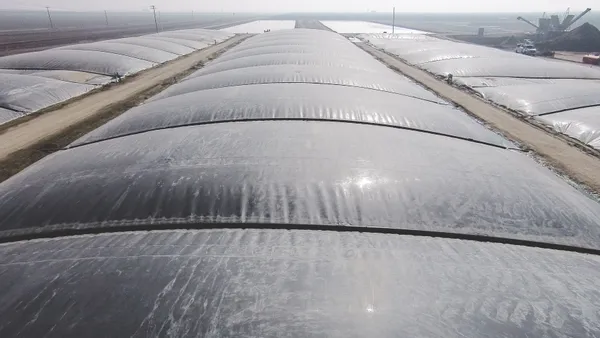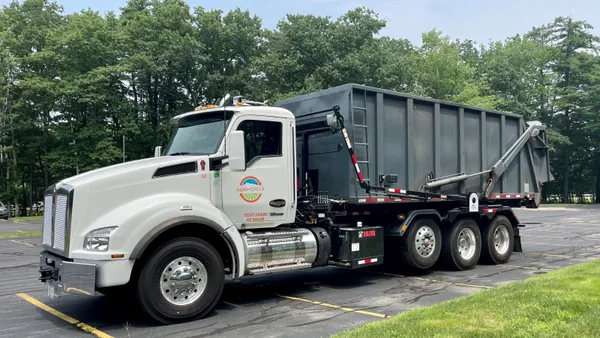Dive Brief:
- An anaerobic digester in Johnston, Rhode Island is set to open this fall after several delays, as reported by EcoRI News. The facility first opened in August 2017 but closed shortly after due to mechanical issues.
- Once operational, the facility will have capacity to process up to 249 tons of organics each day. The biogas generated from the digester will produce 3.2 MW of electrical output. Orbit Energy Rhode Island, which is co-owned by Blue Sphere and Entropy Investment Management, runs the project. Both are based in Charlotte, North Carolina.
- The $18.9 million digester will accept shipments from grocery stores, schools and food manufacturers. The facility cannot yet accept full pallets of packaged material, but can accept organic material that is in plastic, cardboard and metal packaging.
Dive Insight:
This is Rhode Island's first dedicated anaerobic digestion plant, according to the American Biogas Council. Once fully operational, this plant can be expected to help preserve capacity at the adjacent Central Landfill — the only one in the country's smallest state — and could finally kickstart notable progress for local organics diversion.
Rhode Island does have a commercial organics diversion law, like others in the Northeast, but it has a wide exemption. Commercial operations have to be within 15 miles of a processing facility to be covered. The law first took effect in 2016 and was expanded in 2018, but its radius remained 15 miles which severely limited the scope. Currently the state's only other option is a commercial composting operation toward it southern border and too far away from the population center around Providence.
To the credit of Rhode Island Resource Recovery Corporation (RIRRC), it has begun working with the EPA to prevent food waste in other ways upstream. The two agencies recently collaborated on an event as part of the state's broader food policy strategy work.
When the facility goes online and starts accepting feedstock, it will be worth watching how much inbound material comes from new locations being covered by the mandate and how much is diverted via the open the market. The amount of energy output from generated biogas should also be monitored by those interested in potentially siting new projects, as it can be sold back to the grid to offset operational costs and potentially increase revenue.









